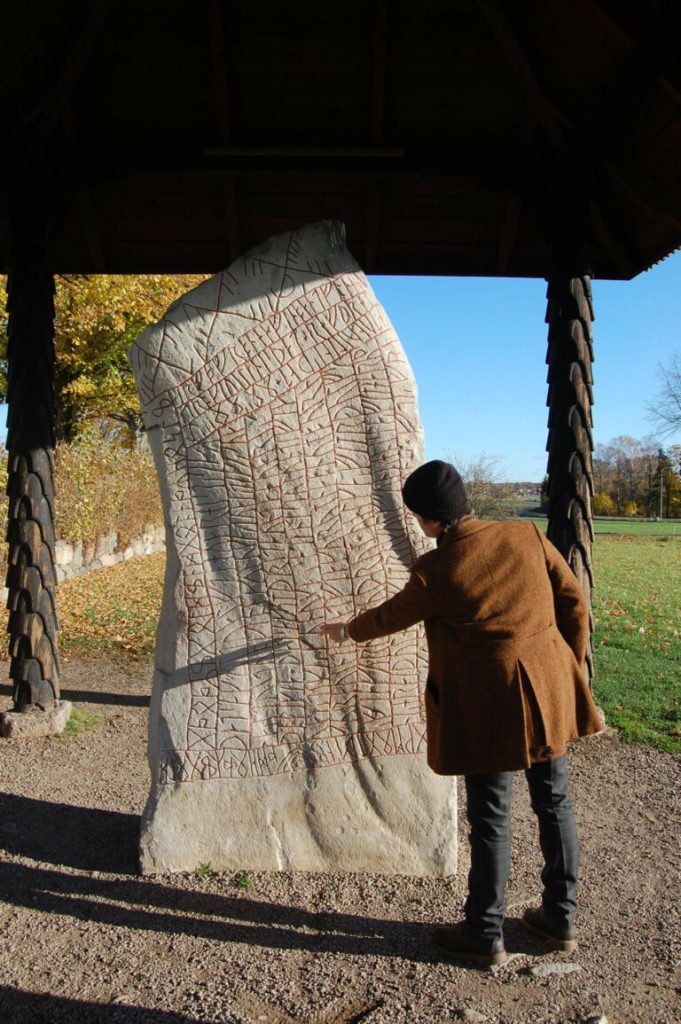Standing resolutely in the Swedish province of Östergötland, the majestic Rök Stones have long been silent witnesses to the Viking Age, guarding its secrets for centuries. Among these ancient monoliths, the Rök Stone stands out as the most renowned, bearing the longest known runic inscription ever discovered on stone. This remarkable artifact is adorned with intricate verses that narrate tales of heroism, mythology, and the legendary exploits of Theodoric the Great, a 6th-century king of the Ostrogoths.
A Cataclysmic Event in the 6th Century: The Great Climate Crisis
For generations, the cryptic runes etched into the Rök Stone baffled historians and scholars, their deeper meanings veiled in mystery. Recent groundbreaking research, however, has uncovered a stunning revelation: the Rök Stones may bear testimony to a devastating climate catastrophe that struck the Viking world centuries before the stones were erected.

Between 536 and 550 AD, a series of colossal volcanic eruptions expelled vast amounts of ash into the atmosphere, creating a dense veil that blocked sunlight. This led to a dramatic cooling of the climate across the Scandinavian peninsula, causing abnormally cold summers. The repercussions were catastrophic: widespread crop failures and famine devastated the region, with some estimates suggesting that as much as 50% of the local population perished during this period of upheaval.
The Birth of Ragnarök: A Myth Rooted in Reality
The researchers propose that this traumatic climatic event may have planted the seeds for one of the most enduring myths of Viking culture: Ragnarök. This apocalyptic narrative describes a series of cataclysmic events—including the darkening of the sun and the advent of the Fimbulwinter, a “Great Winter”—which were believed to culminate in the end of the world as the Vikings knew it.
The parallels between the historical climate crisis and the mythological story are striking. Both depict periods of intense darkness, unrelenting cold, and widespread suffering. These shared elements suggest that the Vikings’ collective memory of the climate catastrophe profoundly influenced their myth-making, embedding the trauma of those events into their cultural and spiritual worldview.
A Resilient Legacy: Preserving History in Stone
The Rök Stones stand as enduring symbols of the resilience and creativity of the Viking people. Faced with a catastrophic climate crisis, they found ways to memorialize their history, beliefs, and experiences for future generations, carving them into the very stones of their environment.
The recent study of the Rök Stone has not only illuminated a pivotal chapter in the Viking Age but also revealed the depth of their understanding of the natural world and the forces that shaped their lives. The runes, carefully deciphered by scholars, contain hidden stories that provide a glimpse into the complexity and sophistication of Viking society. These inscriptions are more than mere records; they are an intricate tapestry of history, myth, and environmental awareness.
A Timeless Lesson: Adaptation and Survival
As we confront the challenges of climate change in the modern era, the story of the Rök Stones offers a poignant reminder: the ability to adapt and endure in the face of environmental upheaval is a fundamental aspect of the human experience. The Vikings, with their ingenuity and resilience, preserved their legacy through stories etched in stone, ensuring that future generations could learn from their triumphs and struggles.
By studying these ancient inscriptions, we gain not only a better understanding of the past but also valuable insights into how humanity has historically navigated periods of crisis. This knowledge can serve as a guide for addressing the uncertainties of our own time.
The Rök Stone’s enduring message is one of survival, adaptation, and the enduring power of human ingenuity. As we continue to decode the runes, we uncover stories that connect us to a shared history—a history that demonstrates how cultures have grappled with the profound challenges posed by environmental change. By understanding the lessons of the past, we can better equip ourselves to navigate the challenges of the present and the uncertainties of the future.
In the face of a changing climate, the story of the Rök Stones inspires us to reflect on our own resilience. It is a timeless tale of a people’s determination to preserve their identity and legacy against overwhelming odds. These ancient carvings, weathered by time but still legible, serve as a bridge between the past and the present, reminding us of the indomitable spirit of those who came before us. The Vikings, through their remarkable ingenuity and foresight, have left us a legacy that continues to resonate across the ages, urging us to learn from their experiences and find hope in the enduring strength of humanity.





